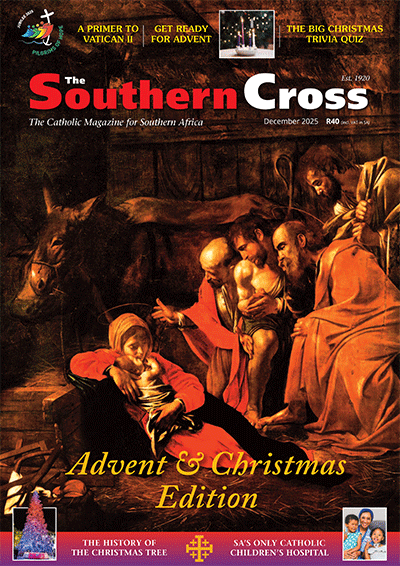11: Connecting with a superstar among saints
Francesco di Bernardone was in many ways the prototype hippie, in the best sense of the word. He opted out of society to live his ideals, he renounced materialism in favour of a cooperative lifestyle, he founded communes that provoked the suspicion of the mainstream, and faced with the bitter opposition of the establishment he preached and lived the commandment of love for the other. Strange then that the most of hippies of the 60s embraced New Age paganism (and then went on to cut their hair and don business suits) instead of following the poet of God who wrote of Brother Sun and Sister Moon.
Of course, St Francis of Assisi was not just a drop-out nonconformist. He was a visionary whose impact on the Church was tremendous. Even today we need more people like him though presumably the Church of today would not treat Francis any better than the Church of his time.
Francis’ primary sidekick was Chiara di Offreducci (whom English-speakers know as Clare), who also exercised a profound influence on the Church. St Clare is a giant among women in Church history. Admittedly, competition in that category is not extreme. The Church tacitly acknowledges the negligible influence it has allowed women to play when its Hall of Fame includes almost exclusively women who preceded the Renaissance.
Francis and Clare define Assisi, an Umbrian town near Perugia. Both were celebrities in their own time. In the College of Saints, St Francis is one of the all-time superstars. In the world of cinema, his equivalent in terms of legendary star power might be Humphrey Bogart; and his footballing counterpart might be George Best.
So buildings and artifacts associated with Francis and Clare were as lovingly preserved as modern society preserves Elvis’ Vegas jumpsuits. In the gothic basilica of Santa Chiara, in the elevated old city of Assisi, a chapel holds cloaks and sandals and other paraphernalia once owned by Francis or Clare.
It is unusual to have such intimate, tangible access to the old saints. Of many saints we know very little, if anything at all. In Assisi we have the actual belongings of two saints and can enter buildings associated with them, a physical connection with famous holy people who lived eight centuries ago. Francis’ patched-up brown cloak easily trumps any saint’s bone fragment relic.
Best of all, preserved inside the Santa Maria degli Angeli (St Mary of the Angels) basilica outside the old city, there is the meadow church of Porziuncola, where the Franciscan movement started.
This is the small chapel which St Francis restored in 1208 after his encounter with the crucifix in San Damiano church (to confuse matters, the crucifix is housed in St Clare basilica, even though the frugal church of San Damiano, which for long was Clare’s domicile, still exists), and where he discerned his ministry.
It was in the Porziuncola that St Clare received the habit from Francis, making it also the birthplace of the Order of Poor Clares. Our group was blessed to have the last Mass of the pilgrimage inside the Porziuncola, in communion with St Francis and his companions.
Among Assisi’s eminent churches, the undisputed heavyweight is the majestic St Francis’ basilica, built shortly after the saint’s canonisation in 1228 (only two years after his death at 44), which holds the tomb of the saint.
Yet, to get a sense of Santo Francesco that loveable innovator whose name, incidentally, means Little Frenchman (on account of his French mother) one is better served at the basilica of St Mary of the Angels. The splendid basilica, completed only in the 17th century, not only incorporates the Porziuncola, but also the room in which Francis died. There are old murals and charming life-size tableaux depicting scenes from Francis’ life, and the beautiful Rose Garden evokes the pastoralism of the saint.
Illustrating not only a perpetual line of devotion to St Francis but also a long tradition of moronic vandalism, the outer walls of the Porziuncola and the murals are adorned with the graffiti of pilgrims from as far as four centuries ago (yes, Giulio of 1618, you shall be recorded eternally as a prize idiot).
Alas, Assisi left a little sour aftertaste. St Francis would be aghast at how vulgar commercialism has infiltrated much of his hometown. One pilgrim, seeking to take me up on an offer to transfer my digital photos of our long journey to CD, was charged 5 euros for a blank disc. That is more than R40 [in 2006 money] for an item that one can buy in South Africa for as little as R1,99.
Charging such prices is not just a rip-off, it is extortion. What would St Francis think of pilgrims, coming with faith to his hometown, being treated in such a cavalier manner by people whose livelihood is based on his legacy? One imagines that this would enrage even mild Francis.
And so our pilgrimage came to a close. After our Mass inside the Porziuncola (an event negotiated by our excellent tour guide Laura Bollati) we travelled through the beautiful Umbrian countryside to Rome’s airport to return to Cairo, where we enjoyed a thoroughly entertaining Nile cruise before catching our flight home.
Our group had seen and experienced much over the previous two weeks. Yet, a pilgrimage does not end when the jet touches down at Johannesburg airport and pilgrims say goodbye to reach other. In many ways, it is at home when the pilgrimage the journey to God really begins.
- Cardinal, Music, Rugby… - November 14, 2025
- Cardinal Brislin on a Year of Surprises - October 31, 2025
- The Church’s 1955 fight to save Catholic schools - October 30, 2025




